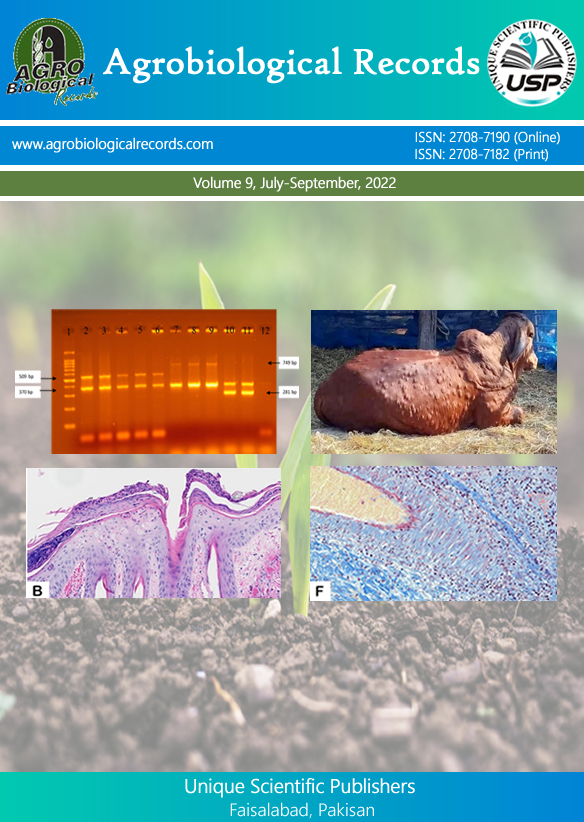
Moseri H 1,*, Belonwu EN 2, Iwegbu A 3 and Gbayisomore OS 1
1Department of Animal Science, Faculty of Agriculture, University of Delta, Agbor, Delta State, Nigeria 2Department of Agriculture Extension, Faculty of Agriculture, University of Delta, Agbor, Delta State, Nigeria. 3Department of Animal Production, Faculty of Agriculture, Dennis Osadebay University, Asaba, Delta State, Nigeria
*Corresponding author: hillary.moseri@unidel.edu.ng; mosierihillary@gmail.com
To determine the impact of a mixture of palm kernel cake (PKC) meal and cassava peels on the hematology, serum biochemistry, performance, and economic aspects of finisher pigs, a 12-week feeding study was conducted. The mixture comprised an equal amount of palm kernel cake and cassava peels. At 1(0), 2(10), 3(20), 4(30), and 5(40%), the combinations replaced maize (control). Fifty large white finishing pigs of both sexes were randomly assigned to five diets, duplicated twice (2x5), with ten pigs per treatment group and five pigs per replicate, using a completely randomized design (CRD). Water and feed were provided as needed. There was a significant (P<0.05) difference in the total final weight gain between 0% having the largest perceived gain (43.15kg), followed by 10 (43.00kg), 20 (41.05kg), 30 (39.35kg), and 40% (39.61kg). The total ultimate weight gain varied considerably amongst the diets (P<0.05). Similarly, the average weekly weight gain rises from 0, 10, 20, 30, and 40%. In comparison to the other of (0: 2.38; 20: 2.25; 30: 2.42; 40%: 2.47), the feed conversion ratio was better (P<0.05) in 10% (2.09), and the feed intake was highest in the control group (47.50kg/day). While 0% and 30% displayed comparable values (2.46). 10% protein efficiency ratio (PER) (2.80) fared better than 20% (2.61) and 30% (2.43). According to the efficiency and economics analysis of finisher pigs fed PKC and cassava peel diets, 10% ($14.10) produced the highest projected profit per total live weight gain. According to hematological and serum biochemical markers, the finisher pigs' general health and nutritional status were improved by the cassava peel/PKC meals. Since the animals on 10% outperformed the control and other treatment groups in terms of economic performance, it is advised that 10% consist of maize substituted with cassava peels/PKC meal.